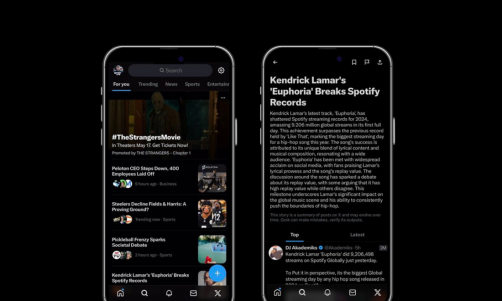
You can spend millions of dollars on product development, but if the end-user just "doesn't get it" -- you're toast.
And there's where UX (short for user experience) comes in.
UX design is the field responsible for making sure a business' products can be used effectively by the target customer. And as a result, UX shapes how the entire business and brand is perceived. It's the difference between whether your customers walk away feeling accomplished or frustrated after using your product.
And it's not as simple as picking bright colors or using fun animations. UX design has less to do with visuals than it does with interaction, information, and research.
Since UX design is a multi-disciplinary area of action, it requires a combination of generalist skills and a specialist eye for detail.
We are here to talk about everything you need to know about UX, or user experience design.
You'll learn about the difference between the user interface and user experience, how UX designers conduct research, and the four disciplines within UX you need to know about to develop a successful UX strategy for your product and brand.
Sounds good? Let's get started.
What is user experience (UX) design?
Any interaction the users have with the products or services of a particular brand is referred to as user experience.
The main goal of UX design is to focus on each step required for a user to achieve one of the goals the product enables.
Breaking this down into pieces, and seeing how it can be made easier, more efficient, less error-prone, and -- in some cases -- more delightful. According to the industry experts, the main focus of UX design is on creating an easy, convenient, relevant, efficient, and pleasant experience for the users.
This entire process can be anything from how a physical product feels in your hand to the experience you had during online shopping.
Usually, UX refers to online experiences such as an eCommerce checkout experience, the signup flow for a software product, or sharing your first post on a new social media platform. Getting these critical aspects of the experience right can be the difference between millions in revenue and crickets in your corporate bank account.
To do that, UX designers combine detailed market research with product development strategies and design aspects to ensure a delighted and expected experience for the users.
They'll use tools like heatmaps to watch where users click (or don't), screen recording tools so they can relive the experiences of their users, and using surveys that allow them to pinpoint the doubts a customer has before deciding to buy.
This kind of research often results in changes to the user interface (UI), which make the product easier to use or improve conversion.
But it's important to understand that UX design and UI design aren't the same things. And there's more to UX than having a beautiful app or website. This will be helpful to have a better understanding of UX and hassle-free utilization of UI/UX design services.
What is the main difference between UX and UI design?
The terms UX and UI are inseparable. Whenever we talk about UX design, the concept of UI design will automatically follow. This causes a lot of confusion about the two concepts.
UX design focuses on improving the users' journey for solving a particular problem.
For example, it follows them through processes like creating an account, adding an item to the shopping cart, or completing a purchase. To start, the focus is on the interaction and information the user has to deal with as they transition from prospect to customer.
Afterward, a UX designer's goal may be to retain customers, avoid unnecessary support requests, or mitigate the need for returns. The results of UX have a direct and tangible impact on the business.
UI design, in contrast, focuses on how attractive the product's surface looks and how it functions.
As a field, it's more closely tied to brand identity and graphic design. That's why many UX designers may not be visual designers at all. Instead, they often work in mockups and wireframes before passing them off to a UI designer.
At the end of the day, it all comes down to the client's needs and demands. Some designers might actually resort to a website design questionnaire to make sure they fully understand their customers' requirements and work based on that.
So while UI and UX design go hand-in-hand, each covers a different yet important part of the customer experience.
In other words, UI is all about the actual interface of the product covering all its visual and interactive aspects like typography, images, videos, color theme, graphics, data tables, animations, navigation touchpoints, etc. You require to hire a UI designer from a reputed brand to ensure all the benefits of a recognizable brand without any hassles or complications.
On the other hand, talking about UX design, it is everywhere, including in the real world - the layout of any place or the usability of the app, etc.
The concept of user experience was popularized in the '90s by Don Norman in his book The Design of Everyday Things.
How large or small the handle on a coffee mug is, how door handles indicate they should be pushed or pulled, even the signs and symbols in international airports that need to be understood by anyone who walks in regardless of where they come from.
Each of these is an example of UX in action.
The Quadrant model of UX design:
The quadrant model of UX design divides it into 4 main disciplines, which are as follow:
● Experience strategy
Besides focusing on the end users, UX design also contributes value to the business's brand. The result is a holistic strategy catering to the needs of both the end-users and the company. Not only does experience strategy cover every single touchpoint in the customer journey, but it has a heavy focus on being able to measure those experiences.
One of the most common ways companies do this is through surveys that ask customers how likely they are to recommend their product to a friend, known as an NPS survey (where NPS stands for Net Promoter Score). The higher the score, the more your users love your product.
NPS surveys are just one example of trying to quantify the user experience and translating it into a metric everyone in a company can work towards improving.
● Interaction design
Concentrating on all the critical design elements of the system, Interaction Design focuses on how the user interacts with the products and services.
For example, the "drag and drop" interaction is one of the most popular ways to build a complex end product out of simple parts in a web or mobile app.
Think about website builders, email marketing tools, email address finders, and much more. You start building with a blank canvas, and simply drag the pieces you want onto it to construct a masterpiece. Click, drag, and release.
The concept of "dragging" elements on a screen, clicking, double-clicking, resizing, pinching in to zoom, scrolling, even swiping left vs. swiping right.
Today, they may be standard interactions, but each arose as a result of interaction design.
Interaction design isn't reserved for individual elements either but includes establishing re-usable patterns that customers will learn as they interact with your product. Done well, interaction design makes your product behave in a way that customers feel is predictable and intuitive.
It's clear that the goal of these interactions is to capture the attention and help convert visitors into customers. There are key components of customer interactions that your websites, app, or software shouldn't miss. Things like CTAs, sales funnels, cross platforms visits are some of the major indicators of a successful intuitive UX design strategy.
● User research
User research is needed at all stages of the UX process: identifying the problem to be solved, figuring out user personas, drafting possible solutions, and testing and iterating on the results to find the optimal one for your customers.
A UX researcher could start with something as simple as a drawing on a piece of paper. The goal is to learn as much as possible, as quickly as possible, and that often means working with low-fidelity prototypes before investing in UI design.
After some initial research, you might graduate from paper mockups to prototypes using Adobe Illustrator alternative tools like Figma or Invision. Tools like these allow you to build interactive mockups, where you can observe customers clicking through your app or product as though it were a live version.
The key difference being, you didn't need a software developer or product designer to spend hours laboring over it first.
Finally, you might be looking to improve an existing product. That's where tools like heatmaps, screen recordings, and surveys come in. They allow you to better understand how people in the real world are using the product in its current state -- or to test how your hypotheses from research hold up.
● Information architecture
This discipline is about making it easy for your users to answer the question, "Where do I find...?" Discoverability and hierarchy of information, settings, features, and more come into play when you're focusing on improving information architecture.
Take for example the situation where someone wants to change the email address associated with their account. What is the first, and most logical place that person would look for it? Perhaps in their profile or their settings. But what happens when they look there but don't find the options they need?
Usually, they either give up and never return. At best, they'll send another email to the support team and have to wait for an answer. Each significantly delays the time it would take them to make a purchase or become a subscriber.
Where interaction design defines predictable patterns for how users interact with your website, application, or product, information architecture defines how people find what they need once inside.
Information architecture not only applies to products, but websites, help centers, documentation, or any other place your customers may need to navigate to find the information they're looking for.
Conclusion:
UX design is not a new concept. Long before the age of computers, companies have been using UX to help people get the most out of their products, enjoy the process, and (usually) spend more money.
Whether it's the way your lamp's light switch works or the techniques you use to search through thousands of emails for that order confirmation for a new pair of sneakers, UX contributes to the way you interact with the world every single day.
Apply the principles of UX and see the impact on your customer's satisfaction, and your bottom line.










